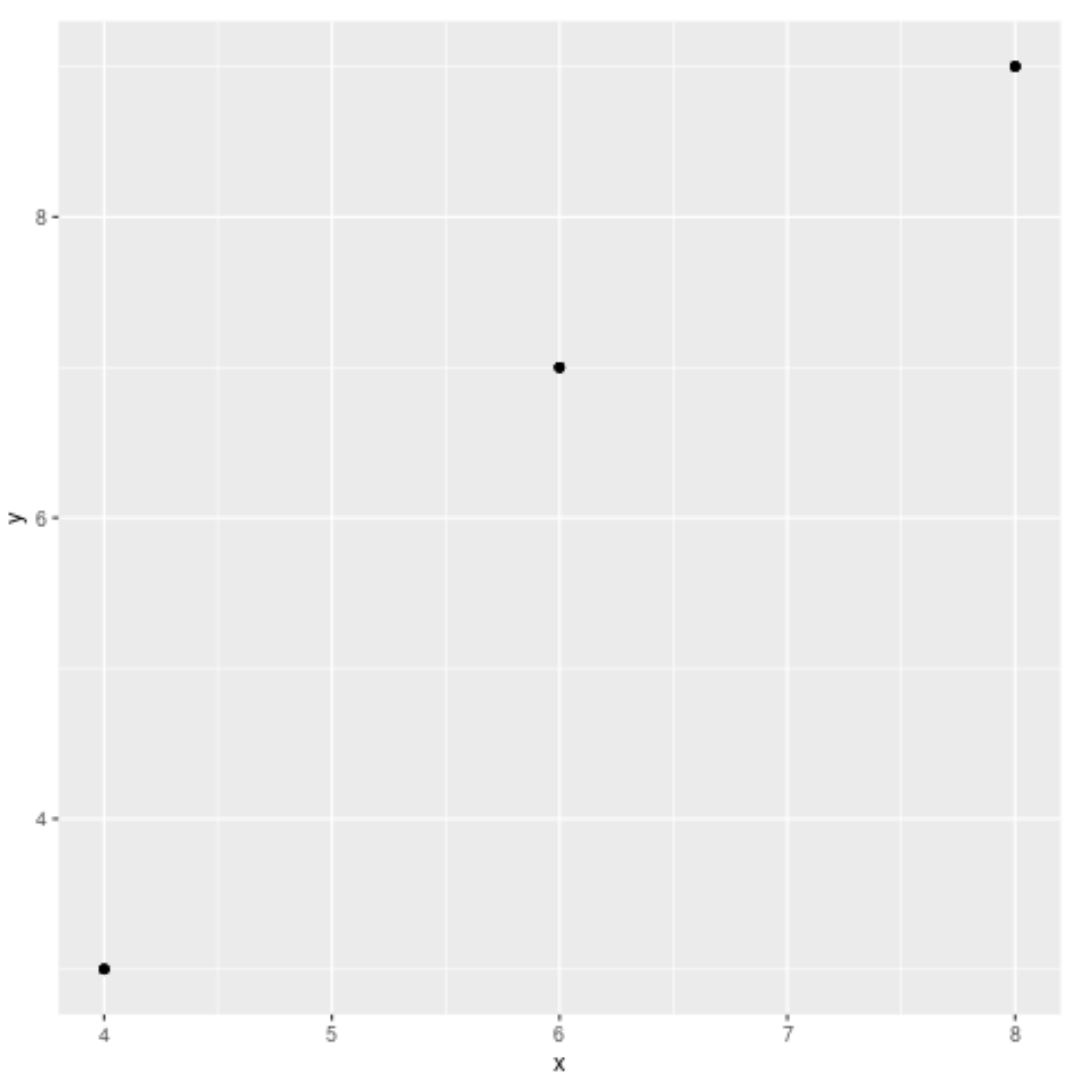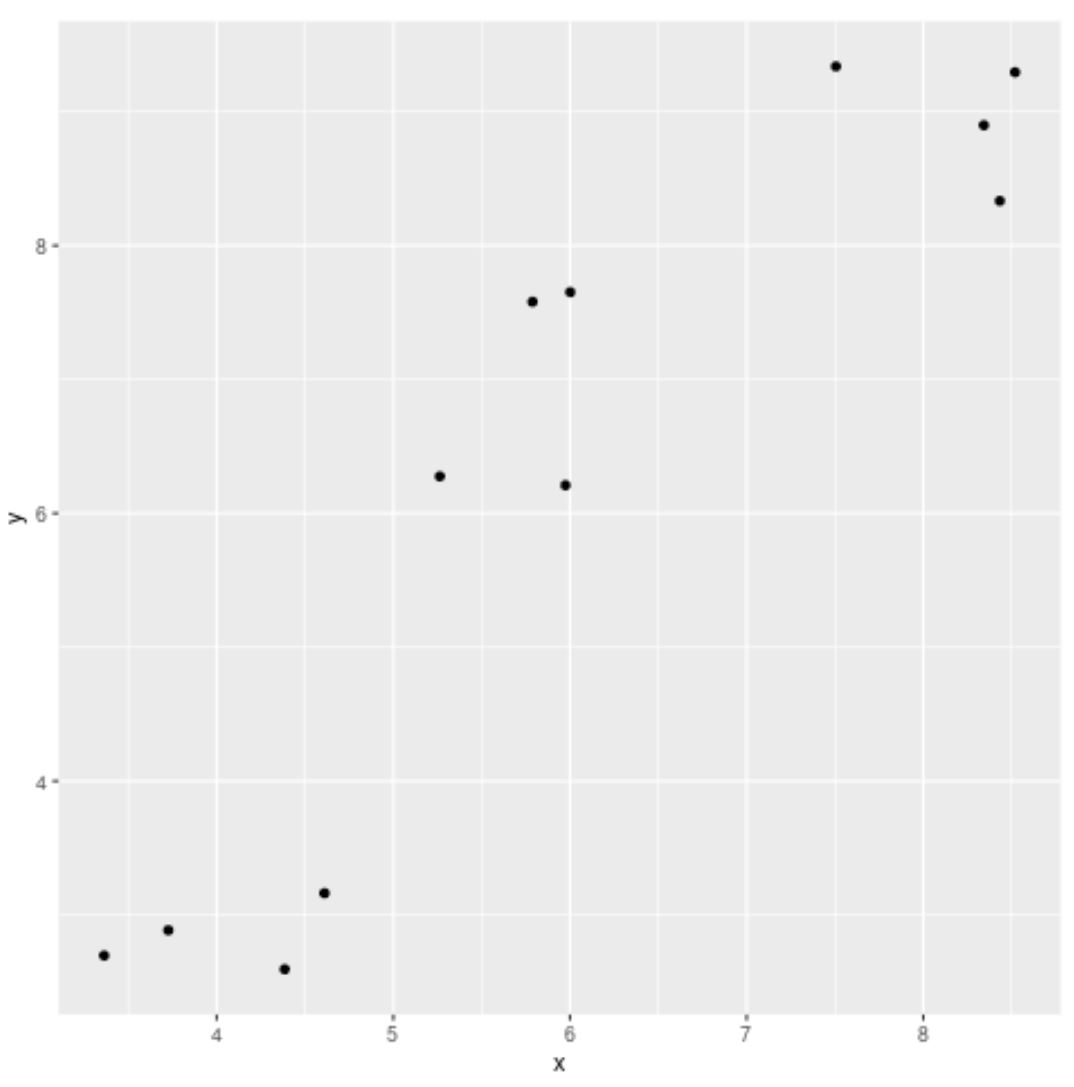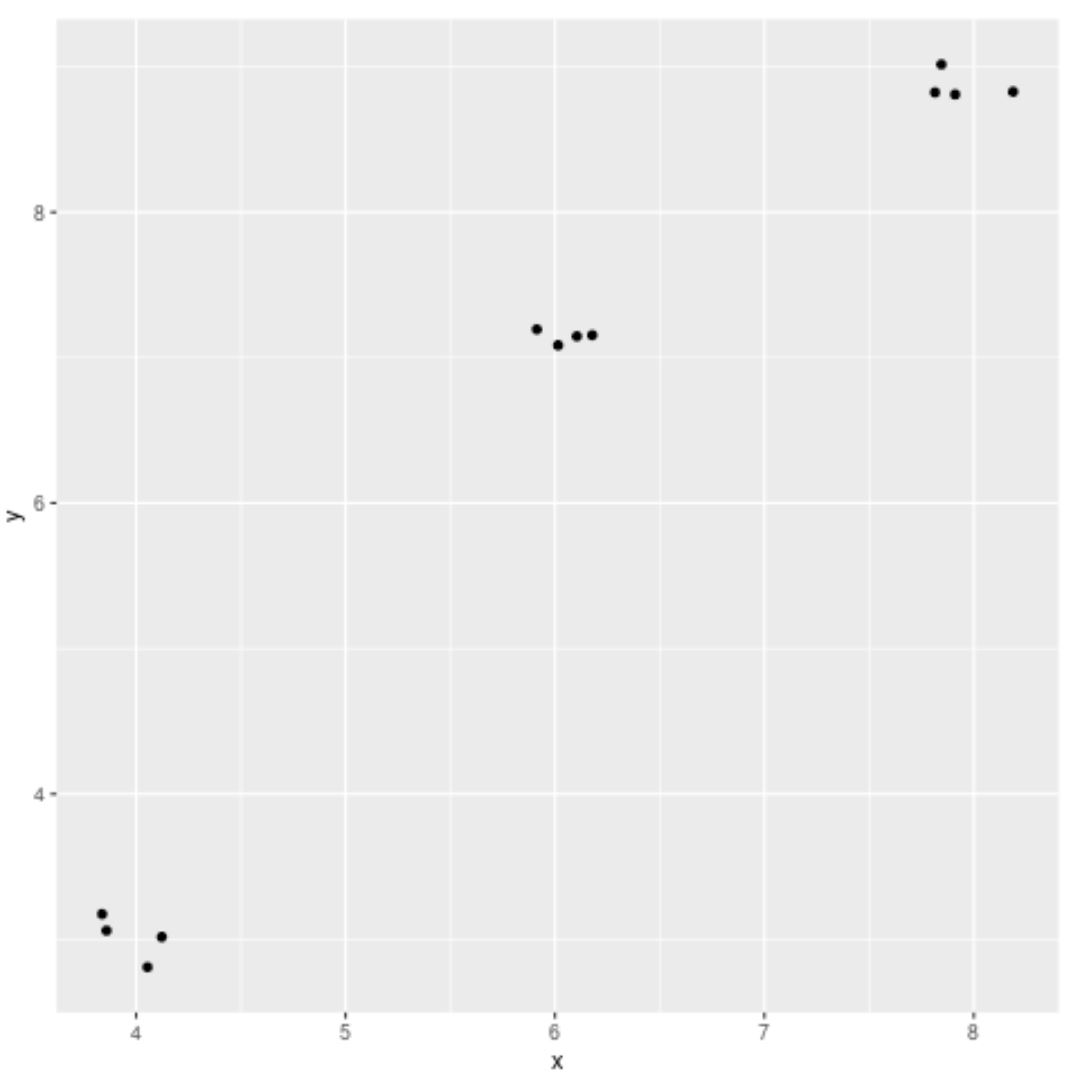如何在 ggplot2 中抖动点(带有示例)
创建散点图时,摆动点可以帮助您更轻松地查看可能重叠的点。
在 ggplot2 中抖动点的最简单方法是使用geom_jitter() ,它使用以下基本语法:
ggplot(df, aes(x=x, y=y)) +
geom_jitter()
以下示例展示了如何在 R 中使用以下数据框实际使用geom_jitter()函数:
#create data frame
df <- data. frame (x=c(4, 4, 4, 4, 6, 6, 6, 6, 8, 8, 8, 8),
y=c(3, 3, 3, 3, 7, 7, 7, 7, 9, 9, 9, 9))
#view data frame
df
xy
1 4 3
2 4 3
3 4 3
4 4 3
5 6 7
6 6 7
7 6 7
8 6 7
9 8 9
10 8 9
11 8 9
12 8 9
示例 1:创建无抖动点云
以下代码展示了如何在 ggplot2 中创建散点图而不使用抖动:
library (ggplot2)
#create scatterplot
ggplot(df, aes(x=x, y=y)) +
geom_point()

原始数据库包含 12 个观测值,但由于其中几个具有相同的 x 和 y 值,因此散点图中似乎只有 3 个观测值。
示例 2:创建具有默认抖动的点云
以下代码展示了如何使用geom_jitter()中的默认设置在 ggplot2 中创建散点图:
library (ggplot2)
#create scatter plot with jittered points
ggplot(df, aes(x=x, y=y)) +
geom_jitter()

请注意,由于我们使用geom_jitter()向每个点的宽度和高度添加随机噪声,因此现在 12 个观测值中的每一个都在点云中可见。
示例 3:创建具有自定义抖动的点云
以下代码展示了如何在 ggplot2 中创建散点图,并在geom_jitter()中使用宽度和高度参数的自定义值:
library (ggplot2)
#create scatter plot with jittered points
ggplot(df, aes(x=x, y=y)) +
geom_jitter(width= 0.2 , height= 0.2 )

请注意,这些点不稳定,但比前面的示例分散得多。
geom_jitter()中宽度和高度参数使用的值越小,点距离原始位置越远。
随意调整宽度和高度参数,使点按照您想要的方式摇动。
其他资源
以下教程解释了如何在ggplot2中执行其他常见操作:
如何改变ggplot2中的点形状
如何更改ggplot2中的图例标题
如何在ggplot2中旋转轴标签
如何在 R 中修复:找不到函数“ggplot”